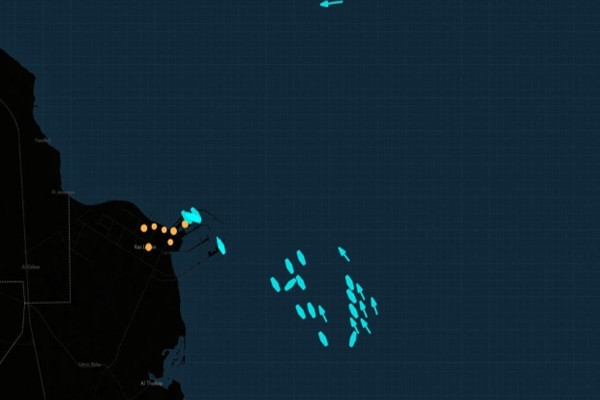
Stephen Stapczynski, Bloomberg News
SINGAPORE
EnergiesNet.com 03 29 2022
The number of empty liquefied natural gas tankers outside one of the world’s biggest exporters of the fuel has risen to the highest in almost a year, exacerbating a global shortage.
Some 21 vessels are idled off the coast of Qatar as they wait to load LNG, according to ship-tracking data compiled by Bloomberg. That’s the most in nearly a year, according to traders, some of who say that it may be due to reduced output. Qatargas, which operates the country’s export facilities in Ras Laffan, wasn’t able to provide a comment.
Lower exports from Qatar, which vies with Australia and the U.S. for the crown of biggest global supplier, has exacerbated a global LNG shortage. Buyers from Europe to Asia are seeking to replace shipments from Russia due to the war in Ukraine, leading to a tight market, and any outage or reduced output can result in jumps in spot prices.
“The recent pile up of ships is concerning because we usually don’t see more than 20 ships waiting to load outside Ras Laffan,” said Fauziah Marzuki, an analyst at BloombergNEF.
Qatar’s exports in February were particularly low, well under the five-year average for that time of year, according to Marzuki. BNEF estimates that Qatar could reach a total output of 6.5 million tons for March, short of production in the prior two years.
Qatargas LNG Train 6 was shut for more than a month until March 20, according to energy data provider Kayrros, which gathers operational data via satellites.
Marzuki says there could be several reasons for the jump in empty ships off Qatar:
- There could be a technical issue at the plant or upstream facilities that has been causing a reduction in output.
- The accumulation of ships could be a domino impact of the lower output in February spilling over into March loadings.
- It could also be that Qatargas is shifting maintenance plans. Still, in this scenario there should not be as big of a queue of ships since buyers would have had a little more advance warning.
The parked vessels have returned after delivering cargoes to places including China, Japan, India and Italy, ship-tracking data on Bloomberg show. Qatar usually sends most of its LNG to Asian markets during this time of year, so any disruption is going to be felt more by customers in the Pacific than in the Atlantic, according to Marzuki.
bloomberg.com 03 29 2022












